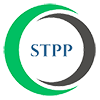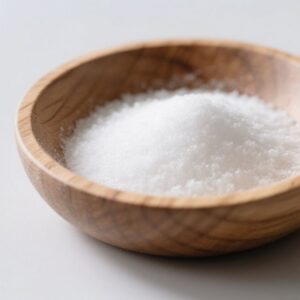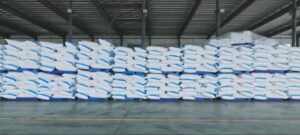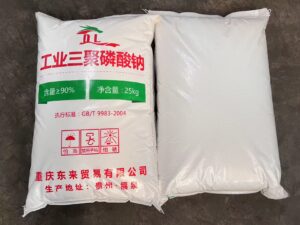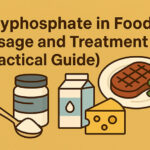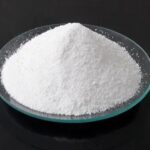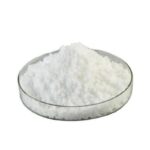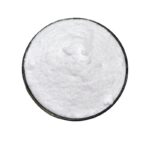This article addresses the current supply, demand, and capacity dynamics for food-grade Sodium tripolyphosphate (STPP) in the processed food sector. It focuses on upstream raw-material constraints and production-line developments. The aim is to deliver actionable technical insight for formulation, procurement, and operations professionals.
Global Market Overview
According to a recent study, the global food-grade STPP market was valued at around USD 650 million in 2024 and is projected to reach about USD 970.55 million by 2032, at a compound annual growth rate (CAGR) of approximately 5.2 % over the period.
The segmentation of STPP demand shows that the food-processing application accounts for a meaningful share. One report estimates food-processing uses near 20% of total STPP demand.
From a capacity and production-line standpoint, the literature presents strong interest in expansion and refined processing, but few sources provide verified plant-level numbers for food-grade STPP. This gap underscores the need for caution when interpreting “capacity” claims.
Upstream Raw Materials and Supply Constraints
The production chain for food-grade STPP typically begins with phosphate rock, moves through phosphoric-acid conversion (wet- or thermal-process), then proceeds through neutralisation and polyphosphate condensation to yield STPP. The need for food-grade purity adds further refining steps, increasing cost and tightening supply.
A key constraint is the specification of trace metals (lead, cadmium, arsenic, mercury) and fluorides. Although exact figures for food-grade STPP are seldom published, industry commentary warns that tighter specifications reduce eligible feedstock pools. One regulatory call from the European Commission seeks technical data for E450–E452 phosphate additives, signalling potential tightening of impurity limits.
Another supply pressure arises from soda-ash availability and energy costs in the condensation stage. While the literature mentions cost/opex structure, none provide detailed comparative data for food-grade lines versus general industrial grade.
Production-Line Updates and Capacity Implications
Several plant-project reports outline generic STPP manufacturing units, covering equipment such as spray dryers, kilns, quench towers, granulators, and packaging. While useful, they stop short of quantifying food-grade capacity increases tied to recent upgrades.
Key upgrade themes for food-grade processing include:
- Automation in feed dosing and granulation to reduce impurity cross-contamination.
- Improved kiln or furnace energy recovery to lower the cost of condensation and improve throughput.
- Dedicated purification circuits to achieve stricter heavy-metal/fluoride limits required for food applications.
From a technical vantage, operators should monitor retrofit initiatives that can deliver yield gains of 5-10% or throughput improvements of similar magnitude—but publicly verified data remains limited and would benefit from supplementary documentation from the plant owner or vendor.
Note: Available market reports list capacity, output, and price forecasts, but rarely attribute them explicitly to food-grade STPP lines.
Demand Drivers and Food-Application Trends
Demand for food-grade STPP is driven by processed-food volumes, especially in meat, poultry, seafood, and ready meals. As one market summary indicates, STPP is used as a moisture-retention and texturising agent in these categories.
Regions with high growth potential include the Asia-Pacific, where food processing is accelerating. However, exact regional breakdowns for food-grade STPP remain opaque in many reports.
Technicians and procurement teams should focus on:
• matching STPP spec to food application (e.g., seafood vs. poultry)
• aligning supply-chain qualification with region-specific regulatory expectations
• planning for clean-label trends that could affect future STPP demand.
Supply-Chain Risk Factors and Strategic Implications
Key risk vectors for food-grade STPP supply and capacity include:
- Regulatory tightening of phosphate-additive impurity specifications (especially in Europe) may reduce supplier eligibility.
- Feedstock volatility: phosphate rock quality variation, soda-ash cost, energy & emission cost increases.
- Production disruptions: plant outages, retrofit periods, environmental shutdowns.
- Logistics constraints: for export-oriented food processors relying on STPP from other regions, shipping and warehousing may impose delays or cost escalation.
For operations teams, the strategic implications are:
- Maintain dual-source qualification (both food-grade STPP and alternate additives) to mitigate feedstock/plant risk.
- Align contract specifications with the strictest region served by the supply chain (often Europe) so that downstream food products remain compliant globally.
- Monitor vendor announcements for capacity expansions, purifying-circuit upgrades, or heavy-metal-spec revisions, and integrate these signals into your risk matrix for supply continuity.
Conclusion and Technical Takeaways
Food-grade STPP remains a critical additive in processed foods due to its moisture-retention and texturising properties. Its supply, demand, and capacity dynamics are shaped not only by downstream food-industry growth but also by upstream raw-material constraints and production-line refinements.
From a technical leadership perspective:
• Verify that the STPP you source is labelled food-grade, meets heavy-metal and fluoride specs applicable in your geography and application.
• Work with your vendor or internal engineering teams to understand whether the plant supplying you recently underwent an upgrade for food-grade purity or throughput.
• Treat upstream impurity limits, energy cost, soda-ash availability, and logistics as first-order drivers of cost, lead-time, and risk—not just the functional chemistry of STPP in your formulation.
If you require verified plant-level capacity data, recent retrofit case studies, or independent vendor audits for food-grade STPP lines, please share any reports or filings you already have, and a deeper review can be conducted.

